
Janus Henderson: No recession signal
Global narrow money trends continue to signal a weak economic outlook but have not deteriorated further since early 2018 – a recession warning, in other words, has yet to be issued.
15.11.2018 | 10:16 Uhr
Six-month growth of global (i.e. G7 plus E7) real narrow money moderated in September but, in broad brush terms, has moved sideways since reaching a low in February, remaining below its range over 2009-17. Allowing for an average nine-month lead, the suggestion is that six-month industrial output momentum will bottom out in late 2018 and stabilise at a weak level in early 2019 – see first chart.
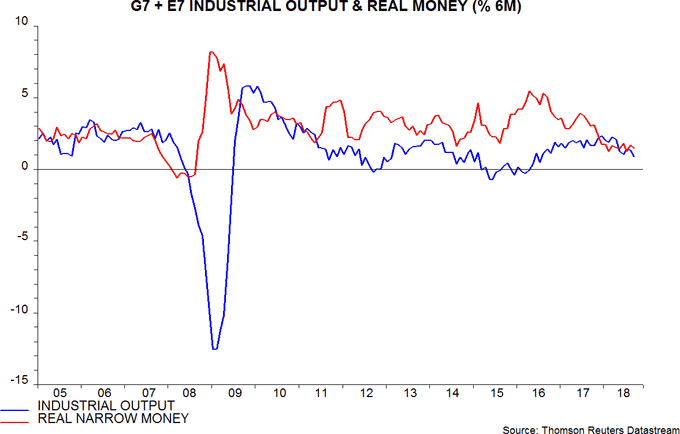
The expected economic slowdown is on track – G7 plus E7 six-month industrial output growth is estimated to have declined to a 26-month low in September, based on data accounting for two-thirds of the aggregate.
Narrow money trends have stabilised across the major economies: the six-month change in real narrow money is above its minimum over the last year in all the G7 plus E7 economies except Mexico and Korea. Real narrow money growth is relatively firm in Japan and Euroland and weak in the US (and China), casting doubt on the sustainability of recent US economic / equity market outperformance – second chart.
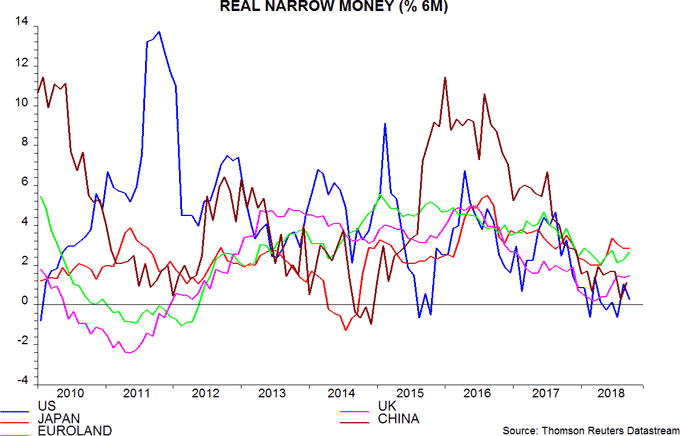
While the stabilisation of G7 plus E7 real narrow money growth is reassuring, trends have deteriorated further in smaller Far East economies suffering a triple squeeze from US rate hikes, China’s slowdown and tariff wars – third and fourth charts. These economies are too small to have a significant direct impact on global activity but associated financial stresses could contribute to an extension of the current “risk-off” move in markets, with negative feedback to monetary trends / economic prospects in the major economies.
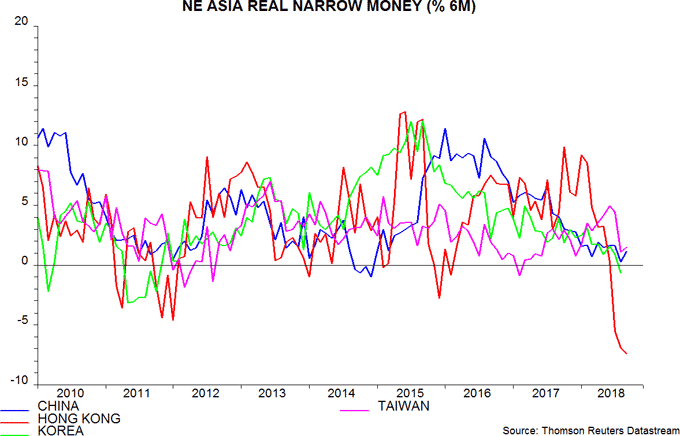
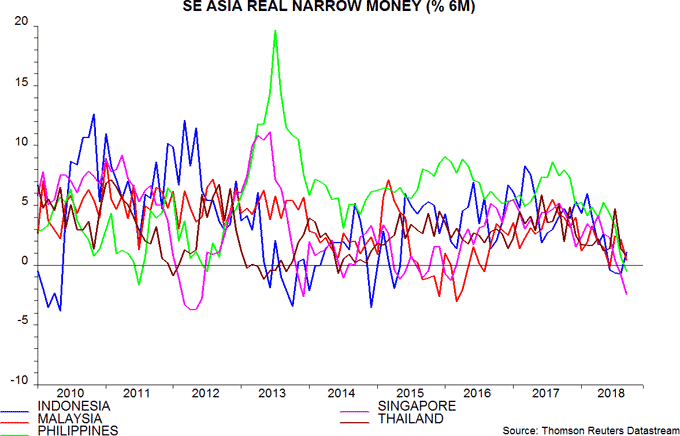
The two "monetarist" rules followed here for switching between global equities and US dollar cash recommended cash at end-September. The first rule, which prefers equities if G7 plus E7 six-month real narrow money growth is above industrial output growth, will move back into equities at end-October, since a positive gap was restored in August and appears to have been maintained in September – first chart.
As an aside, G7 plus E7 annual real narrow money growth remained below industrial output growth in August and, probably, September. A switching rule using annual growth rates would also have outperformed buy-and-hold significantly historically but by less than the rule based on six-month changes.
The second rule prefers equities if G7-only annual real narrow money growth is above 3.0%, its pre-GFC long-run average. Growth recovered in September but did not exceed this threshold, so this rule will remain in cash during November – fifth chart.
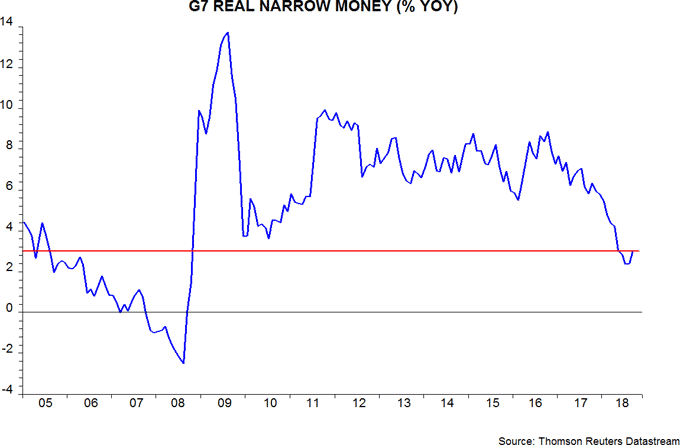




Diesen Beitrag teilen: